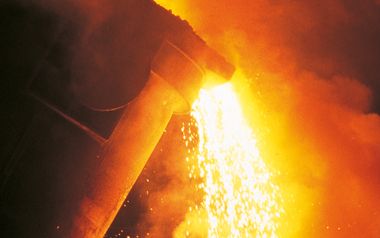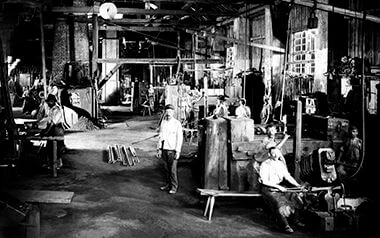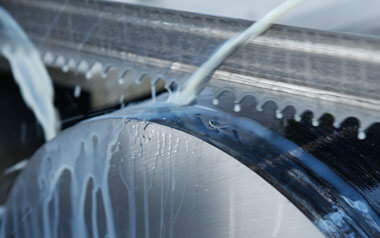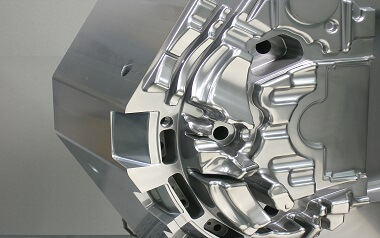Ferritic stainless steels have a microstructure of ferritic solid solution.
The most important alloying elements of such steels are Cr and Mo. The ferritic, body-centred cubic solid solution structure is achieved by a special balance of alloying elements. In this context, Cr, Mo and others act as strong ferrite-stabilising elements. The elements stabilising the austenite such as Ni, Mn, C, N are usually kept very low. The Cr content of ferritic stainless steels is usually 12 to 28%. Especially for high-performance steels (Superferrites), extremely low C and N contents are aimed for, which has a positive effect on the toughness characteristics. Ni is added in small quantities as a toughness-promoting alloying element. Ferritic steels are strongly ferromagnetic.
The corrosion resistance is essentially determined by the Cr and Mo content. The resistance to intergranular corrosion is determined by the free Cr content, i.e. the Cr content in the solid solution that has not set in the form of Cr carbides.
In general, ferritic stainless steels have a slightly higher strength and are significantly more resistant to stress corrosion cracking than the austenitic Cr-Ni(Mo) steels. Formability, on the other hand, is comparatively poorer, as is toughness, which is also strongly dependent on the cross-section. Ferritic stainless steels also show a pronounced transition from ductile to brittle fracture behaviour with decreasing temperature.
Due to these limitations, the application is generally limited to thin-walled products (sheets, strips, tubes) in all industrial sectors and in corrosive media, e.g. for household goods, chemical process technology, magnetic applications, etc.
Martensitic stainless steels are ferromagnetic and, on the other hand, have a microstructure consisting mainly of a martensitic phase (carbon martensite) and possibly small amounts of secondary phases such as ferrite, austenite and carbides. Such steels are quenched and tempered to higher strengths by heat treatment – hardening and tempering. The Cr content is approx. 12 to 18% with proportions of Mo and Ni. Depending on the C and N content, these steels achieve high strengths and good wear resistance.
However, martensitic stainless steels show lower toughness and a relatively high transition temperature, are difficult to weld and usually require subsequent heat treatment, which usually limits their application to non-welded parts.
To achieve a martensitic structure, the Cr contents tend to be in the low range and part of the chromium is bound in carbide precipitates. Therefore, the corrosion resistance is comparatively lower and mostly below that of standard austenitic steels. For this reason, and also because of their limited toughness, martensitic stainless steels are used where higher strength and hardness are required, e.g. for cutlery, general mechanical engineering, shafts and fasteners.
A special subgroup of martensitic stainless steels, the soft-martensitic and age-hardenable stainless steels (Super-martensite) achieve the martensitic structure not through C or N, but through higher Ni contents at low C and N contents. This is associated with higher toughness, better weldability and also higher corrosion resistance due to lower binding of Cr by C. Alloying elements such as Cu, Ti, Al are used to achieve hardenable alloy systems (PH-Steels), whereby an increase in strength is achieved through the precipitation of intermetallic from the martensite in the course of heat treatment.
Common applications of such steels are mechanical engineering, e.g. fastening elements, shafts, springs, gears and lightweight construction, e.g. in the aerospace industry.





















